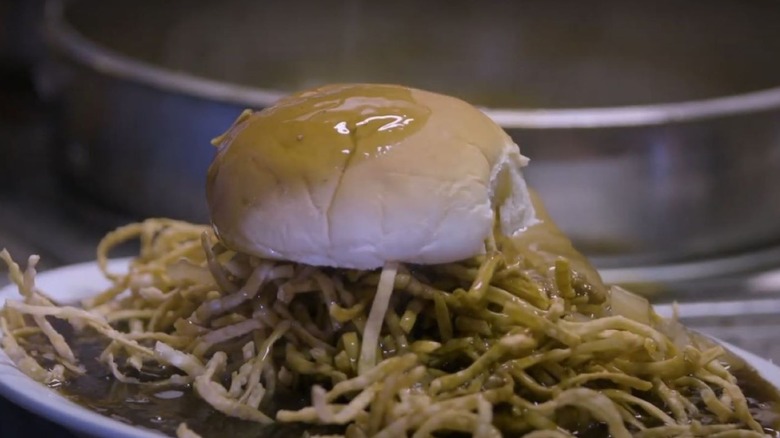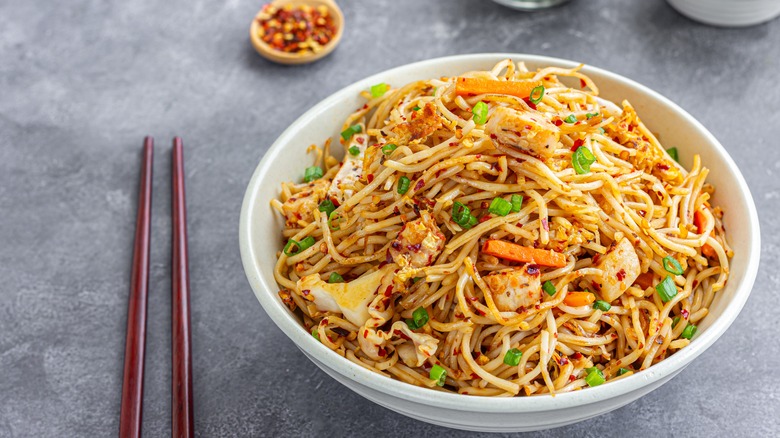How The Chow Mein Sandwich Became A Massachusetts Icon
Generally speaking, noodles aren't usually considered a sandwich filling. However, if you hail from southeastern Massachusetts, you might think otherwise, because you've probably encountered the regional specialty that is the chow mein sandwich.
The sandwich name is pretty literal: It's a robust helping of chow mein noodles served up in bread. But there are some nuances: Firstly, the bread is usually a burger bun. Inside, you'll get crispy fried noodles, and a gravy-like brown sauce doused over the top. The flavor itself diverges somewhat from chow mein as a noodle dish: While chow mein recipes add in ingredients like soy sauce and rice wine, recipes for the sandwich sauce are closer to gravy, featuring stock or bouillon, as well as a sweetener like molasses sometimes, plus a thickener like cornstarch.
While it looks like a sandwich, it's probably easier to eat with chopsticks or a knife and fork, as that sauce would make it a handheld mess. In addition to the noodles, the sandwich will often contain other standard elements of chow mein — celery, onions, bean sprouts, and meat. Pork is standard, but chicken, shrimp, and beef are often a possibility at places that serve it. For comparison, a regular chow mein may have additional veggies like cabbage and carrot that tend to be absent from chow mein sandwich recipes. It's the kind of lunch you'll get with fries and soda, and it's affordable, sometimes going for as little as $5 per sandwich.
A sandwich with history
If you're thinking that the chow mein sandwich is a new trend, perhaps sparked by social media, you're way off the mark. It first appeared in either the 1920s or '30s (sources differ slightly on the timeframe) in the city of Fall River. The sandwich is usually credited to Chinese immigrant and restaurateur Frederick Wong, who found enough success with the dish that he founded a whole noodle company, Hoo-Mee, that now supplies the crispy noodles for the dish.
The city was a hub for the textile industry, with lots of workers from cold climates like England, Ireland, and Quebec (Canada). The story diverges a bit here: Some say that Wong recognized these workers' love of hearty meals with sauces like gravy and actively created the sandwich, which proved popular as an affordable yet filling lunch.
Other histories suggest it was more of a happy accident: That chow mein was already served to locals as a regular noodle dish, but with bread to soak up the sauce. One day, a restaurant was out of bread so they subbed in hamburger buns, and the chow mein sandwich was born. In any case, the chow mein sandwich took off (even Emeril Lagasse became a fan). It's still common in Fall River — Mee Sum Restaurant is considered one hot spot for it — and it spread to some surrounding areas in southeastern Massachusetts and places like Pawtucket in Rhode Island, but generally can't be found further afield.

